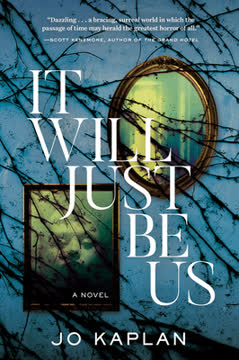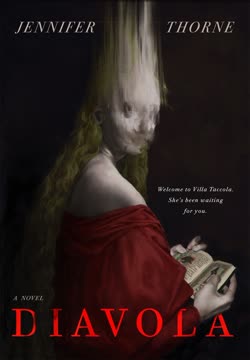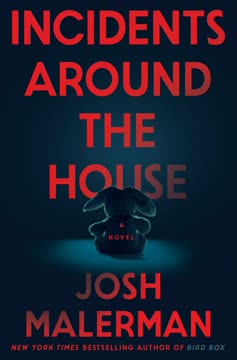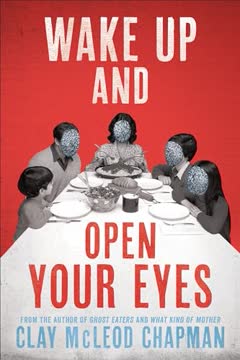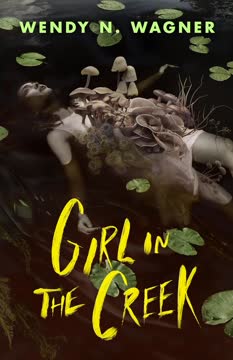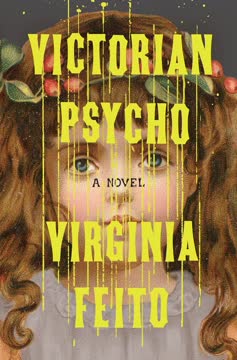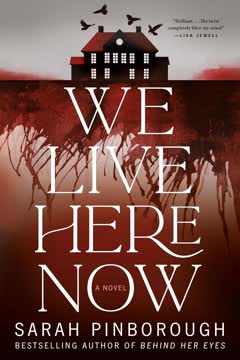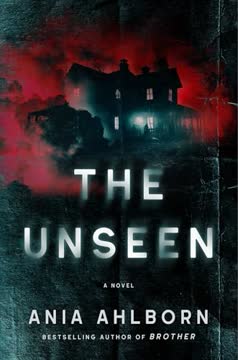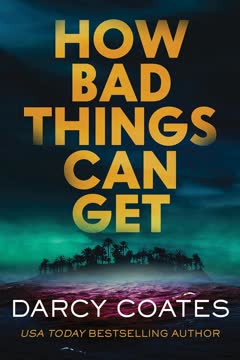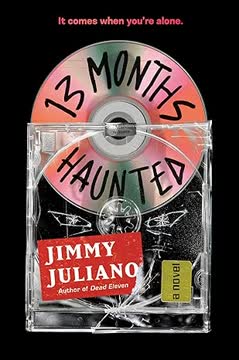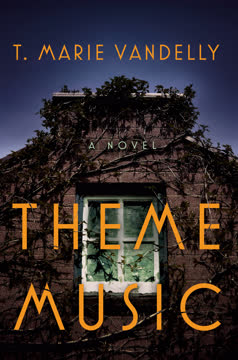Plot Summary
Wakefield Manor's Locked Door
Wakefield Manor, perched on the edge of Virginia's Great Dismal Swamp, is a labyrinthine, ancestral home haunted by the past. Samantha, the narrator, returns to live with her eccentric mother, Agnes, after trauma and estrangement. The house is filled with locked rooms, especially one at the end of a shadowy hallway, which has always been forbidden. The locked door becomes a symbol of the family's buried secrets and the unknown horrors lurking in their bloodline. The house itself is alive with echoes—memories and ghosts replaying scenes from centuries past, blurring the line between past and present, reality and haunting. The oppressive atmosphere sets the stage for the unraveling of generational trauma and supernatural dread.
Sisters Return, Secrets Unfold
Samantha's pregnant sister, Elizabeth, arrives at Wakefield Manor after fleeing her husband, Donovan. Their mother welcomes her, but old sibling rivalries and wounds quickly resurface. Elizabeth's presence stirs up memories of their dysfunctional childhood, marked by neglect, emotional distance, and the mysterious death of their father. The sisters' relationship is fraught with jealousy, resentment, and a desperate longing for connection. As Elizabeth settles in, the house's supernatural phenomena intensify—ghostly music, apparitions, and the sense that the past is bleeding into the present. The locked room looms ever larger in Samantha's mind, representing both familial and personal mysteries she is compelled to confront.
Hauntings of Memory and Blood
The house is a repository of memory, replaying scenes from the lives of previous Wakefields and those they oppressed or aided. Samantha witnesses echoes of the Quaker Wakefields, their involvement with escaped slaves, and the suffering of women and children. The supernatural is not just haunting but cyclical—trauma repeats itself through generations. Samantha's own trauma, including a violent mugging and her father's suicide, is mirrored in the house's spectral dramas. The boundaries between living and dead, past and present, are porous. The locked room, in particular, is a locus of suffering, madness, and death, its secrets festering at the heart of the family.
The Faceless Boy Appears
Samantha begins to see a faceless boy—sometimes a child, sometimes a teenager—committing acts of cruelty, such as torturing animals. He is both a ghost and a premonition, a figure out of time who calls her "Auntie." The boy's presence is deeply unsettling, suggesting a future evil that has not yet occurred. Samantha becomes convinced that this is her unborn nephew, Julian, and that he is destined to become a monster. The house's ability to show not just the past but the future blurs the boundaries of fate and free will. Samantha is tormented by the question: can the cycle of violence and madness be broken, or is it inevitable?
Swamp Witch's Tragic Tale
The narrative shifts to the story of Clementine, an escaped slave who finds refuge in the swamp with her family. After a supernatural encounter, Clementine drowns and returns changed—undead, possessed, or cursed. She becomes the Swamp Witch, a figure of both vengeance and sorrow, whose presence haunts the land and the Wakefield family. Her story is one of generational trauma, loss, and the desperate attempt to protect her daughter, Meriday, from the violence of men. The Swamp Witch's legend is woven into the fabric of the house and the swamp, a warning and a curse that echoes through time.
Echoes of Past Suffering
The house replays the suffering of its former inhabitants: the captivity and abuse of Meriday, the madness of August Wakefield, and the complicity of the family in cycles of violence. Samantha uncovers the truth that her own lineage is tainted by rape, betrayal, and the erasure of Black ancestry. The locked room is revealed as a site of imprisonment, birth, and death—a place where the boundaries of time and identity collapse. The ghosts are not just memories but warnings, urging the living to reckon with the sins of the past before they are doomed to repeat them.
Family Fractures, Tensions Rise
As the snow falls and the family is trapped together, tensions escalate. Donovan returns, and his presence brings out the worst in everyone. Old patterns of abuse, neglect, and denial resurface. Samantha and Elizabeth's relationship is tested by fear, jealousy, and the looming threat of Julian's birth. Agnes retreats into wine and superstition, unable to protect her daughters or herself. The house becomes a pressure cooker, amplifying every slight and secret. The locked room, now accessible, becomes both a sanctuary and a prison—a place where the family must confront the darkness within and without.
The Key and the Zero
Samantha discovers the key to the locked room, hidden by her mother after her father's suicide. The room is a place of madness, a "Zero" where time collapses and reality warps. In the room, Samantha finds her father's journal, filled with ramblings about the void, the impossibility of nothingness, and the terror of seeing oneself reflected in the abyss. The room is a portal, a singularity where the family's trauma is concentrated and magnified. The act of unlocking the room is both literal and symbolic—Samantha is forced to confront the full horror of her family's legacy and her own complicity in its perpetuation.
Madness in the Locked Room
The locked room becomes a site of psychological and supernatural breakdown. Samantha is haunted by visions of her father's suicide, the suffering of Jonah and Meriday, and the faceless boy's future crimes. The room warps reality, showing her the "Zero"—a black hole of trauma and evil that cannot be escaped. The boundaries between self and other, past and future, living and dead, dissolve. Samantha is forced to reckon with the possibility that she, too, is part of the cycle of violence—that the evil in the family is not just inherited but enacted, again and again, by those who refuse to see or change.
Violence, Mirrors, and Revelations
Donovan's presence becomes increasingly menacing, culminating in physical violence against Elizabeth and Samantha. The house's mirrors, symbols of self-reflection and portals to other realities, are smashed in a desperate attempt to break the cycle. But the violence only escalates—Donovan is tied up, Elizabeth goes into labor, and the family is pushed to the brink. The locked room becomes the site of Julian's birth, a moment of hope and horror as the past, present, and future converge. The faceless boy's prophecy looms: will Julian become the monster Samantha fears, or can love and sacrifice change fate?
Donovan's Descent, Elizabeth's Pain
As Elizabeth's labor intensifies, Donovan escapes his bonds and pursues Samantha and the newborn Julian through the house and into the tunnels beneath. The chase is a nightmare of claustrophobia, violence, and supernatural dread. Samantha is forced to confront Donovan, the embodiment of generational male violence, and the possibility that she must kill to save her nephew. The house and swamp become a labyrinth of memory and fate, with no clear escape. The family's suffering reaches its peak as Elizabeth bleeds out, Agnes is incapacitated, and Samantha is left alone to face the consequences of her choices.
Birth Amidst Snow and Shadows
In the locked room, amidst candlelight and the echoes of the dead, Elizabeth gives birth to Julian. The moment is both miraculous and terrifying—Julian is born with the umbilical cord around his neck, a symbol of the family's strangling legacy. Donovan bursts in, demanding his son, and chaos erupts. The mirror in the room becomes a portal, the "Zero," threatening to swallow them all. Samantha flees with Julian, pursued by Donovan, as the house collapses into madness. The birth is both an ending and a beginning—the culmination of generations of trauma and the uncertain hope for something new.
The Tunnel and the River
Samantha escapes into the flooded tunnels beneath the house, carrying Julian through freezing water and collapsing earth. Donovan pursues her relentlessly, embodying the inescapable violence of the past. The chase leads them into the swamp, where the boundaries between life and death, past and present, are thinnest. In the icy river, Donovan drowns, pulled under by the weight of his own rage and the swamp's curse. Samantha, half-frozen and desperate, loses Julian to the cold. The moment is one of utter despair—the cycle seems unbreakable, the cost of survival too high.
The Witch's Bargain
At the edge of death, Samantha encounters Clementine, the Swamp Witch, who takes Julian's lifeless body and submerges it in the river. In a moment of horror and wonder, Julian is returned to life—crying, reborn, marked by the witch's touch. The bargain is ambiguous: has Julian been saved, or has something been taken from him forever? The swamp's magic is both a blessing and a curse, offering hope at a terrible price. Samantha returns home with Julian, but the cost of survival is clear—Elizabeth is dead, Agnes is broken, and the future is uncertain.
Aftermath: The Old Woman's Eyes
In the aftermath, Samantha and Agnes raise Julian, trying to love him despite the darkness within. But the signs of evil persist—Julian tortures animals, speaks to ghosts, and is drawn to the locked room. Samantha realizes, too late, that she has become the old woman with Xs for eyes, the ghost she feared as a child. The house remains a prison, the cycle of trauma unbroken. The story ends with the chilling recognition that some evils cannot be undone, that the past is never truly past, and that the locked room at the heart of the family will never be empty.
Characters
Samantha Wakefield
Samantha is the narrator and emotional core of the novel—a woman marked by trauma, introspection, and a desperate need to understand her family's legacy. She is both a victim and a potential perpetrator, caught between the desire to break the cycle of violence and the fear that she is complicit in it. Her relationship with her sister, Elizabeth, is fraught with rivalry, love, and guilt. Samantha's psychological depth is revealed in her obsession with the house's history, her archaeological mindset, and her struggle with reality as the supernatural and the personal become indistinguishable. Her journey is one of self-discovery, horror, and ultimately, tragic resignation.
Elizabeth Wakefield
Elizabeth is Samantha's older sister, impulsive, emotional, and desperate for love and normalcy. Her pregnancy and flight from an abusive marriage bring her back to Wakefield Manor, where she is forced to confront her own past and the family's darkness. Elizabeth's relationship with Samantha is complex—she is both protector and antagonist, embodying the contradictions of sisterhood. Her hope for a new beginning is shattered by the birth of Julian and her own death, making her both a victim of generational trauma and a symbol of lost potential. Her inability to escape the family's curse is both heartbreaking and inevitable.
Agnes Wakefield
Agnes is the sisters' mother, a woman retreating into wine, superstition, and the rituals of the occult. She is both wise and deeply flawed, unable to shield her daughters from harm or to confront her own complicity in the family's suffering. Agnes's obsession with the house's history and her tarot readings reflect her desire for control in a world that is fundamentally uncontrollable. Her psychological fragility is mirrored in the house's decay, and her ultimate failure to save her family is a testament to the power of denial and the limits of love.
Donovan Hill
Donovan is Elizabeth's estranged husband and the father of Julian. He is charming, controlling, and ultimately violent—a modern echo of the abusive men in the Wakefield lineage. Donovan's presence in the house escalates the family's tensions and brings latent violence to the surface. His pursuit of Samantha and Julian through the house and swamp is both literal and symbolic—a manifestation of the inescapable legacy of male violence. Donovan's death is both a release and a continuation of the cycle, as his influence lingers in Julian.
Julian
Julian is Elizabeth's son, born amidst horror and supernatural intervention. He appears throughout the novel as a faceless boy, committing acts of cruelty and calling Samantha "Auntie." Julian is both a victim and a vessel for the family's curse—a child marked by trauma before birth, shaped by violence, and ultimately transformed by the Swamp Witch's magic. His development is ambiguous: is he doomed to become a killer, or is there hope for redemption? The novel suggests that some wounds are too deep to heal, and that Julian's fate is a mirror of the family's unresolved pain.
Clementine / The Swamp Witch
Clementine is an escaped slave who becomes the Swamp Witch after a supernatural drowning. Her story is one of suffering, loss, and the desperate attempt to protect her daughter, Meriday. As the Swamp Witch, she is both a figure of terror and a symbol of generational trauma—her curse infects the land and the Wakefield family. Clementine's intervention in Julian's death and rebirth is ambiguous, offering both hope and horror. She is a reminder that the past is never truly past, and that the wounds of history continue to bleed.
Meriday
Meriday is Clementine's daughter, a child caught between worlds—Black and white, slave and free, past and future. Her suffering at the hands of August Wakefield and her forced assimilation into whiteness are central to the novel's exploration of identity and erasure. Meriday's story is one of survival and loss, her fate a testament to the violence inflicted on women and children by systems of power. She is both a ghost and a foundational ancestor, her pain echoing through the generations.
August Wakefield
August is a 19th-century Wakefield, brother to Constance and son of Frances. He is a Quaker turned tyrant, whose grief and rage lead him to imprison and abuse Meriday and her father, Jonah. August's violence is both personal and systemic—a reflection of the family's capacity for cruelty and the broader horrors of American history. His actions set in motion the cycles of trauma that haunt the house and its descendants.
Jonah
Jonah is Meriday's father, an escaped slave who endures captivity and loss at Wakefield Manor. His suffering and resilience are emblematic of the novel's themes of endurance and the cost of survival. Jonah's warnings about the locked room and the "Zero" are ignored, his pain repeated by those who come after. He is a tragic figure, unable to save his daughter or himself from the family's curse.
The Old Woman with Xs for Eyes
This recurring apparition is a grotesque, eyeless old woman in a wheelchair, laughing silently. She is revealed, in the end, to be Samantha herself—transformed by years of suffering, complicit in the family's horrors, and unable to escape the house or her own fate. The old woman is a symbol of the inescapability of trauma, the way the past consumes the present, and the ultimate futility of trying to break the cycle without true reckoning.
Plot Devices
The Locked Room
The locked room at the end of the hall is the novel's central symbol and plot device. It is a place where time collapses, where the past, present, and future bleed together. The room is a site of imprisonment, birth, death, and madness—a "Zero" or black hole that absorbs and magnifies the family's suffering. Unlocking the room is both a literal and metaphorical act, forcing characters to confront the full horror of their legacy. The room's shifting reality and its connection to the supernatural are used to explore themes of fate, free will, and the inescapability of trauma.
Echoes and Hauntings
The house is alive with echoes—ghosts, memories, and premonitions that replay scenes from the past and future. These hauntings are not just supernatural but psychological, representing the way trauma is inherited and repeated. The echoes serve as both warnings and traps, urging the living to reckon with history while also ensnaring them in its patterns. The device blurs the boundaries between reality and the supernatural, making the house a character in its own right.
The Faceless Boy / Premonition
The recurring figure of the faceless boy, who is revealed to be Julian, is a device for foreshadowing and exploring the question of fate. His acts of cruelty and his haunting of Samantha are both warnings and prophecies, suggesting that the future is already written. The device raises the stakes for Samantha's choices—can she change what is to come, or is she doomed to play her part in the cycle?
The Swamp Witch / Folklore
The legend of the Swamp Witch, rooted in the real suffering of Clementine and her family, is used to connect the personal and the historical, the supernatural and the social. The witch's curse is both a literal haunting and a metaphor for generational trauma, racism, and the violence of the past. The device allows the novel to explore the ways in which stories shape reality and the power of myth to both warn and wound.
Mirrors and the "Zero"
Mirrors in the novel are both literal and symbolic—portals to other realities, sites of self-confrontation, and gateways to the "Zero," a black hole of trauma and evil. The shattering of mirrors is an attempt to break the cycle, but it also unleashes chaos. The "Zero" is a plot device for exploring the collapse of time, the impossibility of escaping the past, and the terror of nothingness. It is both a supernatural phenomenon and a metaphor for psychological breakdown.
Nonlinear Narrative / Time Collapse
The novel's structure is nonlinear, with memories, hauntings, and premonitions interwoven with the present action. This collapse of time is both a narrative device and a thematic exploration of trauma's persistence. The structure forces the reader to experience the confusion and horror of the characters, making the supernatural feel both inevitable and inescapable.
Analysis
It Will Just Be Us is a modern gothic horror that uses the haunted house not just as a setting, but as a metaphor for the inescapable cycles of trauma, violence, and complicity that shape families and societies. Jo Kaplan's novel interrogates the ways in which the past is never truly past—how the wounds of history, especially those rooted in racism, misogyny, and abuse, are inherited and replayed by each new generation. The locked room at the heart of Wakefield Manor is both a literal and figurative "Zero"—a place where time, identity, and morality collapse, and where the family's darkest secrets are both hidden and revealed. The novel's nonlinear structure, supernatural elements, and psychological depth create a sense of inevitability and dread, asking whether it is possible to break free from the patterns that bind us. Ultimately, the story is a warning: without true reckoning, without the courage to confront and change, we are doomed to become the very ghosts we fear, haunting ourselves and those who come after.
Last updated:
Review Summary
It Will Just Be Us receives mostly positive reviews, praised for its atmospheric gothic horror and haunting imagery. Readers appreciate the unique take on haunted houses, complex family dynamics, and creepy faceless ghost boy. Many compare it favorably to Shirley Jackson's works. The writing style divides opinion, with some finding it beautifully descriptive while others feel it's overly purple. The slow-burn pacing and shocking ending are frequently highlighted. Overall, it's recommended for fans of atmospheric horror and gothic fiction.
